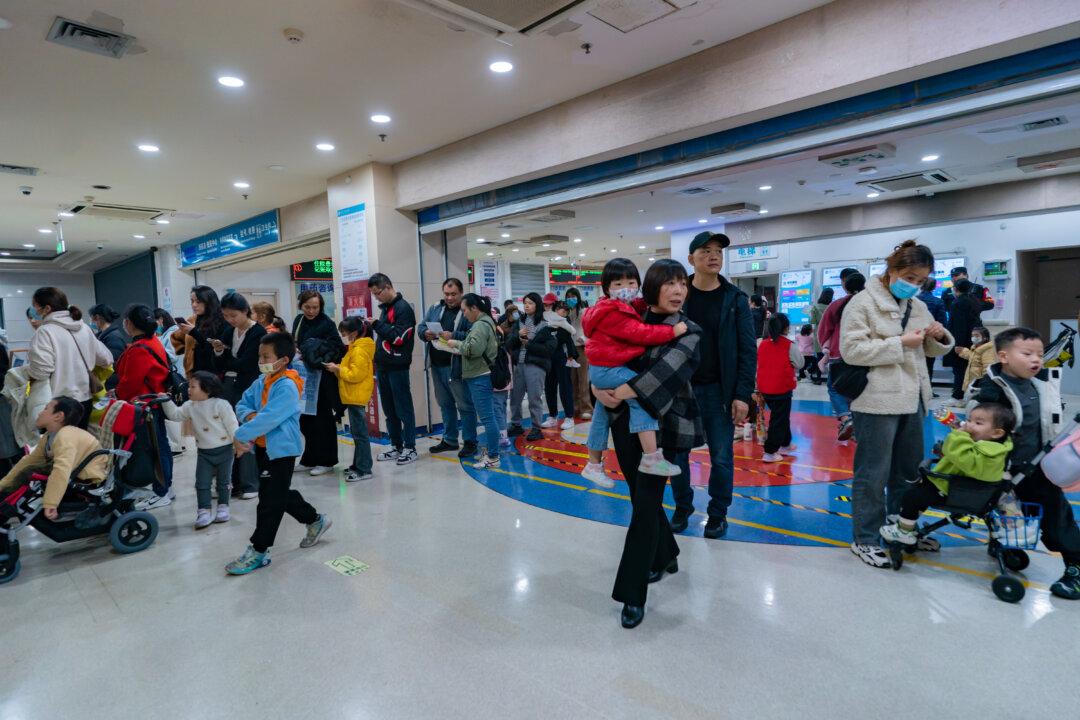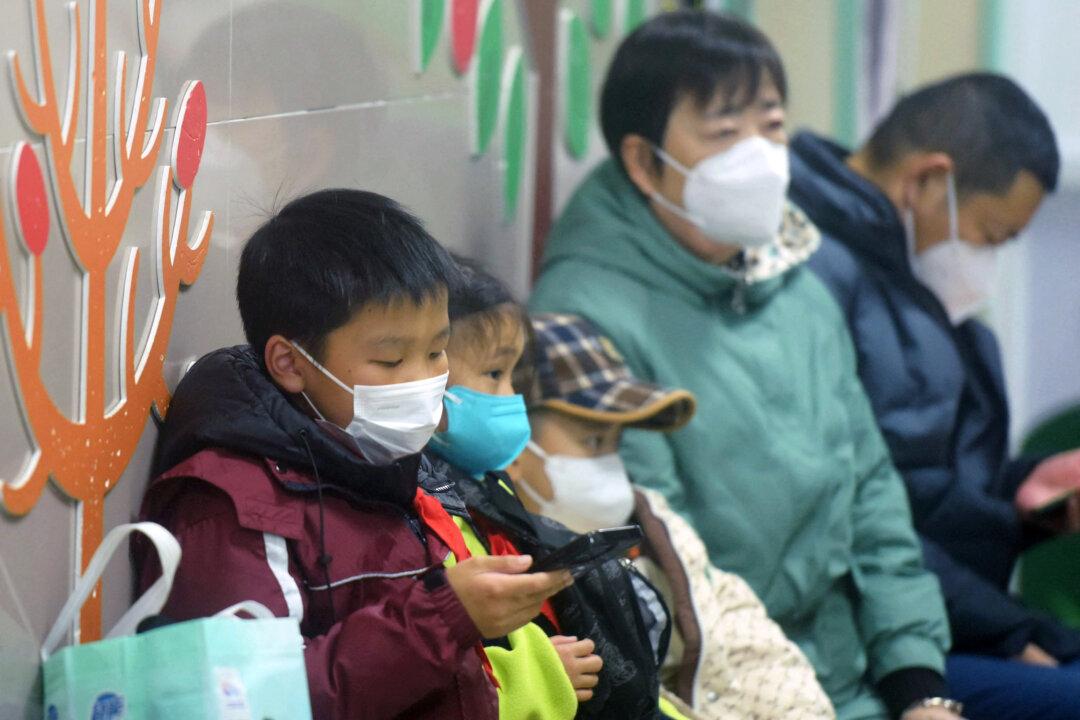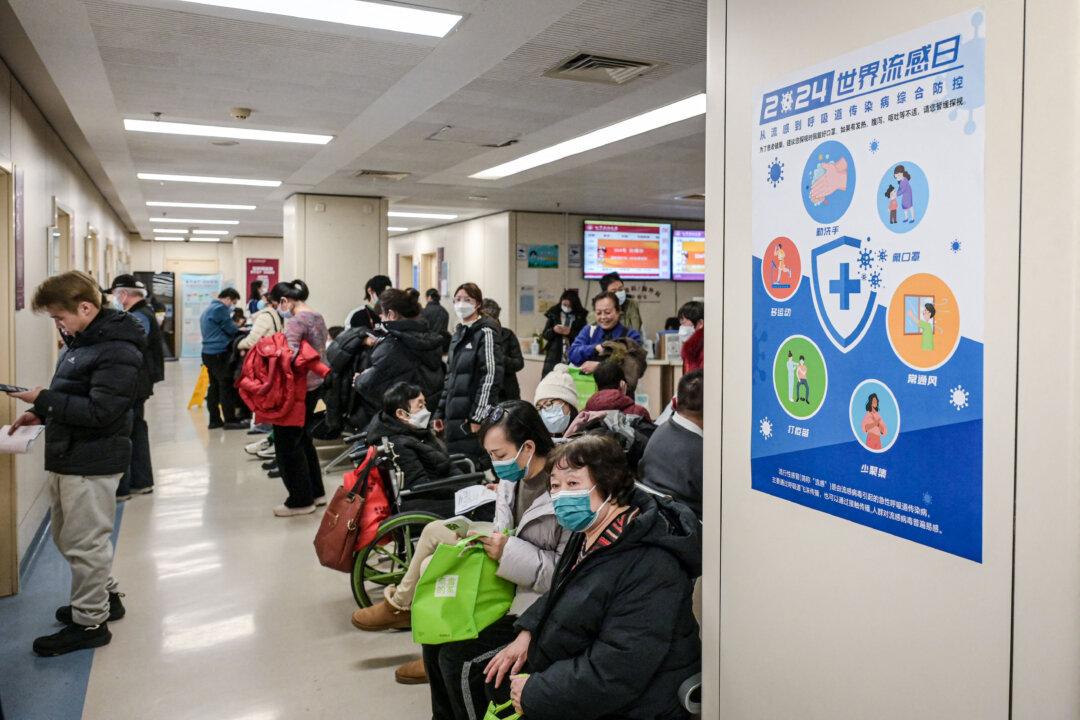The Chinese communist regime’s top diplomat says that the country’s pneumonia outbreak affecting children is under control despite a worsening spread.
The ruling Chinese Communist Party’s (CCP’s) foreign minister, Wang Yi, claimed on Nov. 29 at the U.N. Headquarters in New York while he was chairing a U.N. Security Council session on the Israel–Hamas war: “Recently, we have seen some clusters of flu cases among children in certain parts of China. In fact, that is a very common phenomenon in many countries, and in China that has been put under effective control.”
Meanwhile, reports in China of “white lung syndrome” have attracted international concern. The World Health Organization (WHO) has said it will follow up with China for more health data, as various leaders in other countries demand greater transparency.
“China’s interactions with the international community will not be affected by any factors, and we welcome more visits from friends from across the world,” Mr. Wang added.
China currently holds the rotating presidency of the U.N. Security Council.
Qin Peng, a U.S.-based China affairs commentator for NTD News, sister media outlet of The Epoch Times, said on Dec. 1 that Mr. Wang is not qualified to talk about the respiratory illness epidemic, as he is not a health official or expert and was at the U.N. to talk about the peace issue in Israel. Mr. Qin said he believes that Mr. Wang’s statement about the outbreak shows that the CCP is afraid of being held accountable if another outbreak spreads to other countries.
Mr. Qin said that the CCP regards the epidemic as a diplomatic crisis, not a health crisis. “Wang Yi used the U.N. meeting to make the statement, in fact proving that there are issues with the current epidemic situation in China, and problems with the source of the pathogen and other aspects [that the CCP is likely trying to cover up],” he said.
U.S.-based current affairs commentator Tang Jingyuan told The Epoch Times on Dec. 1 that every time a major epidemic breaks out, the CCP tries to shift the blame to other countries and says it’s a problem of the world.
Chinese Authorities Nervous
Domestically, China’s ruling communist regime has been seen trying to roll out more control measures to deal with the fast-spreading outbreak known only as mysterious pneumonia.On Dec. 2, the CCP’s National Health Commission held a press conference during which Wang Dayan, the director of the National Influenza Center of the Chinese Center for Disease Control and Prevention, said regarding the respiratory illnesses outbreak in China that ventilation and disinfection should be increased in crowded public places and that disinfection and cleaning of frequently touched public facilities should be more frequent. She also said that gatherings of people in public places should be reduced and that people should wear masks at airports, stations, public transportation, farmers markets, and other places.
It’s been reported on Chinese media and social media that further cases of mysterious pneumonia primarily affecting children have spread to more places across the country. Pediatric outpatient clinics in hospitals in Beijing, Shanghai, Tianjin, Sichuan, and other places are full, and hospitals are short of medical staff because many doctors and nurses are also infected.
On Nov. 30, the Seventh People’s Hospital of Dezhou City in Shandong Province put out a notice to hire two pediatricians urgently “due to the rapid spread of respiratory diseases in children and the doubled number patients at the pediatric outpatient clinic.”
“The hospital’s existing pediatricians cannot meet the needs of patients,” it said.
At the same time, many Chinese netizens posted on social media that authorities in various regions in China have resumed using the “health codes” that were used to implement travel restrictions during the first three years of the pandemic. After being inactive for almost a year, one post showed that as of 5 p.m. on Dec. 1, the codes in Sichuan Province and Guangdong were reactivated to green, indicating that it’s safe to travel.
Authorities at Yiwu city, the world biggest wholesale commodity market, issued a notice on Dec. 1 telling residents in both urban and rural areas to stock up on food that can last more than 10 days. The notice triggered panic on social media, as residents are worried about a new round of pandemic lockdowns. The notice was subsequently deleted from the Yiwu government’s official website, but it can still be seen in related Chinese media reports and reposts on social media.
Reports of ‘White Lung Syndrome’ Attract Attention
The major symptom characterizing the mysterious pneumonia outbreak in China is the “white lung syndrome” developed in many infected children since mid-October. “White lungs” are usually an indication of severe pneumonia or COVID-19 cases, such as seen in many patients during the massive wave of COVID-19 infections and deaths in January when Chinese authorities suddenly lifted their strict lockdown.
The CCP has blamed different pathogens for the pneumonia outbreak in China that has again lead to white lung syndrome, naming in official statements mycoplasma pneumonia, influenza, and respiratory syncytial virus infection, while largely avoiding “COVID-19” or “SARS-CoV-2.”
However, the international community is not convinced, continuing to call the current child pneumonia outbreak in China “unknown,” “undiagnosed,” and “mysterious.”
Meanwhile, the United States, the Netherlands, France, Denmark, and South Korea have all reported unusually large increases in childhood pneumonia with the onset of winter this year. However, it remains unclear whether there is any relationship between these outbreaks and the outbreak in China, and the severity of the various outbreaks isn’t certain.

The spike of mycoplasma pneumonia in children has been reported in France too. Radio France Internationale reported on Nov. 29 that the French health department has issued a warning to health care professionals that France is currently observing an “abnormal surge in respiratory tract infections” caused by Mycoplasma pneumoniae bacteria.
The Netherlands reported that there were 103 pneumonia infections for every 100,000 children aged 5 to 14 in the week up to Nov. 19, according to data published by the Netherlands Institute for Health Services Research—a 24 percent increase from the 83 cases reported the week before.
South Korea also reported that its cases of mycoplasma pneumonia in children doubled in November.
WHO epidemiologist Dr. Maria Van Kerkhove said on Nov. 29, “Yes, we are seeing an increase in respiratory infections around the world.”
She said the WHO will “follow up with China” about the ongoing wave of respiratory infections.






